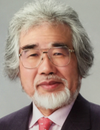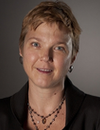Co-Located Conference Agendas3D-Bioprinting "Track B" | 3D-Culture & Organoids | Organ-on-a-Chip and Body-on-a-Chip: In Vitro Systems Mimicking In Vivo Functions "Track A" | Stem Cells in Drug Discovery & Toxicity Screening 2018 | 

Thursday, 4 October 201807:30 | Conference Registration, Materials Pick-Up, Morning Coffee, and Breakfast Pastries | |
Session Title: Conference Opening Plenary Session |
| | |
Plenary Session Chair: Linda Griffith, Ph.D., Professor, Massachusetts Institute of Technology (MIT) |
| | 08:30 |  | Keynote Presentation Microphysiological Models for Metastatic Cancer
Roger Kamm, Cecil and Ida Green Distinguished Professor of Biological and Mechanical Engineering, Massachusetts Institute of Technology (MIT), United States of America
Circulating tumor cells form metastases by reaching a distant microcirculation, undergoing transendothelial migration, entering the remote tissue and proliferating. Microfluidic assays have been developed to visualize and quantify this process within vascular networks that recapitulate aspects of the in vivo microcirculation. Tumor cells, with or without accompanying immune cells, are streamed into a vascular network grown in a 3D matrix, some fraction of which arrest and extravasate into the surrounding matrix. These studies provide detailed information on the ability of different tumor cell types to extravasate, the adhesion molecules they use, and the effects of various other cell types in the intravascular and extravascular spaces. While these models are largely organ-independent, work has also begun to investigate the specificity of certain cancers to metastasize to organs such as the brain. For this purpose, a model of the blood-brain barrier has been produced, characterized in terms of its morphology and vascular permeability, and then used it to explore extravasation and tumor formation with the brain as the target organ.
|
| 09:00 |  | Keynote Presentation Intestine on a Chip for Basic Biology and Patient-Specific Medicine
Nancy Allbritton, Kenan Professor of Chemistry and Biomedical Engineering and Chair of the Joint Department of Biomedical Engineering, University of North Carolina and North Carolina State University, United States of America
Technical advances are making it possible to create tissue
microenvironments on platforms that are compatible with high-content
screening strategies. We have developed microfabricated devices to
enable culture of organized cellular structures which possess much of
the complexity and function of intact intestinal tissue. Stem-cell
culture enables single stem cells or intestinal crypts isolated from
primary small or large intestine from humans or mice to grow and persist
indefinitely as organotypic structures containing all of the expected
lineages of the intestinal epithelium. Our microengineered arrays and
fluidic devices build on this knowledge base to reconstruct
millimeter-scale primary intestinal epithelium that closely mimics the
polarized 3D in vivo microarchitecture of the intestine Chemical
gradients of growth and differentiation factors as well as cytokines are
readily applied across the tissues. These bioanalytical platforms are
envisioned as next generation systems for assay of microbiome-, drug-
and toxin-interactions with the intestinal epithelia. Finally intestinal
biopsy samples can be used to populate the constructs with cells
producing patient-specific tissues for personalized medicine. |
| 09:30 |  | Keynote Presentation Cell Fiber Technology For 3D Tissue-on-a-Chip Application
Shoji Takeuchi, Professor, Center For International Research on Integrative Biomedical Systems (CIBiS), Institute of Industrial Science, The University of Tokyo, Japan
The talk describes a 3D cell culture method using core-shell hydrogel microfibers (cell fibers). The core is filled with cells and ECM proteins, and the shell is composed of calcium alginate. Since the core diameter is about 100 microns, oxygen and nutrients can be diffused into the central area of the 3D tissue; therefore this culture system allows us to culture the tissue for a long period without central necrosis. Using this culture system, fiber-based tissues such as blood vessels, nerves, and muscles can be formed with in the core. Here, I will discuss the application of the cell fiber technology for various tissue-on-a-chip studies including cardiac tissue, neuro-muscular junctions, and vascularized skin etc. |
| 10:00 |  | Keynote Presentation 3D Bioprinting of Soft Tissue: Translation to Clinic
Paul Gatenholm, Professor, Director of 3D Bioprinting Center, Chalmers University of Technology, Sweden; CEO, CELLHEAL AS, Norway, Sweden
3D Bioprinting has a potential to revolutionize regenerative medicine due to unique ability to place multiple cell types in predetermined position and build bottom up the microenvironment to control cellular fate processes. Adult stem cells can be harvested in operating room and combined with biopolymeric hydrogels and 3D bioprinted into desire shape. We have focused our research onto translation of 3D bioprinting technology to clinic. Together with plastic surgeons we are studying preclinical transplantation of 3D bioprinted constructs with stem cells isolated from patient in operating room. The goal is to promote wound healing and repair soft tissue. Translation includes regulatory approved cell isolation protocols and use of regulatory compliant bioinks. We have invented cell-instructive bioinks to be able to control cellular fate processes and to grow vascularized tissue which is of great interest for bringing 3D Bioprinting technology to clinic and space applications. |
| 10:30 | Coffee Break and Networking in the Exhibit Hall | 11:00 |  | Keynote Presentation Industrial Adoption of Integrated Multi-Organ-Chip Solutions
Reyk Horland, CEO, TissUse GmbH, Germany
Microphysiological systems have proven to be a powerful tool for
recreating human tissue- and organ-like functions at research level.
This provides the basis for the establishment of qualified preclinical
assays with improved predictive power. Industrial adoption of
microphysiological systems and respective assays is progressing slowly
due to their complexity. In the first part of the presentation examples
of industrial transfer of single-organ chip and two-organ chip solutions
are highlighted. The underlying universal microfluidic Multi-Organ-Chip
(MOC) platform of a size of a microscopic slide integrating an on-chip
micro-pump and capable to interconnect different organ equivalents will
be presented. The second part of the presentation focusses on the
challenges to translate a MOC-based combination of four human organ
equivalents into a commercially useful tool for ADME profiling and
toxicity testing of drug candidates. This four-organ tissue chip
combines intestine, liver and kidney equivalents for adsorption,
metabolism and excretion respectively. Furthermore, it provides an
additional tissue culture compartment for a fourth organ equivalent,
e.g. skin or neuronal tissue for extended toxicity testing. Issues to
ensure long-term performance and industrial acceptance of such complex
microphysiological systems, such as design criteria, tissue supply and
on chip tissue homeostasis will be discussed. |
| 11:30 |  | Keynote Presentation Human Pluripotent Stem Cell-derived Cardiomyocytes/Neurons on 3D Micro-Tissue Devices for Matured and Functional Cell Products in Drug Discovery and Screening
Norio Nakatsuji, Chief Advisor, Stem Cell & Device Laboratory, Inc. (SCAD); Professor Emeritus, Kyoto University, Japan
Human pluripotent stem (PS) cells, including ES and iPS cells, are
promising sources of various model cells for drug discovery and
toxicology screening. However, there are important (but still
unsatisfactory) needs of more matured and functional cells with reliable
and low-cost production from human iPS or ES cells. We developed a
method of robust and low-cost cytokine-free differentiation of
cardiomyocytes from human ES/iPS cells by combination of small chemical
compounds. We also developed low-cost and labor-saving methods for
construction of 3D multi-cellular devices with aligned nanofibers for
more matured and functional cell device products. Our human iPSC-derived
cardiomyocytes or neurons seeded on nanofiber scaffolds form 3D
multi-layered structures (Micro-Tissues), which show matured and stable
cell/tissue functions. Our Micro-Tissue devices are easy to handle and
useful for drug screening and toxicology assays. |
| 12:00 |  | Keynote Presentation Multi-MPS Interactions for Chronic Inflammatory Disease: A Scaling Challenge
Linda Griffith, Professor, Massachusetts Institute of Technology (MIT), United States of America
The pioneering work of Shuler and colleagues over 20 year ago demonstrated the potential for using interconnected MPS for pharmacology and toxicology applications by showing metabolic conversion of a compound in one MPS and downstream effects on a second MPS. As the role of immunological contributions to drug safety have become more appreciated, the need for more complex immunologically-competent MPS has grown. This has driven development of more complex MPS that are also potentially valuable for modeling inflammatory diseases. This talk will address technical challenges in modeling complex diseases with “organs on chips” approaches include the need for relatively large tissue masses and organ-organ cross talk to capture systemic effects, as well as new ways of thinking about scaling to capture multiple different functionalities from drug clearance to cytokine signaling crosstalk. An example of how gut-liver interactions can be parsed at these levels will be featured, along with new approaches for culturing complex 3D tissues with synthetic extracellular matrix and higher-order multi-organ interactions involving immunology. |
| 12:30 | Networking Lunch in the Exhibit Hall -- Meet the Exhibitors and View Posters | 14:00 | Afternoon of 4 October 2018: Track Consolidated with Organ-on-a-Chip Track ["Track A"] |
Friday, 5 October 201807:30 | Morning Coffee and Breakfast Pastries in the Exhibit Hall | |
Session Title: Current State of the Field -- 3D-Culture and Organoids |
| | 08:00 | Chairman's Welcoming Remarks, Terry Riss, Ph.D., Promega Corporation | 08:30 | Human Islet Killing Assay Using Spheroids
Matthias von Herrath, Vice President and Senior Medical Officer, Novo Nordisk, Professor, La Jolla Institute, United States of America
We will show a novel in vitro islet killing assay that allows for detailed functional readouts and addition of external metabolic and immune stressors. | 09:00 |  | Keynote Presentation Tumor Organoids and Patient Derived Tumor Organoids for HCS Drug Discovery and Personalized Medicine
Daniel LaBarbera, Associate Professor, Department of Pharmaceutical Sciences, Skaggs School of Pharmacy and Pharmaceutical Sciences, University of Colorado Anschutz Medical Campus, United States of America
The past decade has seen a revolution in developing 3D tissue models of organ function, anatomy, and disease. These models are referred to as organoid, organotypic, or spheroid and these terms are used interchangeably throughout the literature. Organoids are defined by their ability to mimic in vivo organ function and/or disease, they can be engineered with multiple cell types and microenvironment components, and organoids have the distinct ability to self-assemble. Like organoids, tumor organoids mimic in vivo tumor biology and recapitulate key interactions between extracellular matrix (ECM) molecules and tumor cell receptors that initiate signaling events regulating and promoting cancer. This presentation will discuss our recent work with gastrointestinal tumor organoid models of epithelial-mesenchymal transition (EMT). These models feature an innovative dual fluorescent biomarker reporter of EMT that can effectively track the forward and reverse EMT transition in live tumor organoids. We have engineered stable dual reporter SW620 cells as single uniform tumor organoids per well in 96-or-384 well plate formats, and have conducted 3D high-content screening (HCS) drug discovery of thousands of compounds. Additionally, we will discuss hit confirmation and secondary assays used to validate compounds that modulate or reverse EMT. Finally, we will discuss our most recent advances to develop patient derived tumor organoid (PDTO) models suitable for high-content analysis and HCS towards achieving the goal of personalized medicine in cancer. |
| 09:30 | 3D Organotypic Human Barrier Tissue Models: Applications in Drug Development and Toxicology
Patrick Hayden, Vice President for Scientific Affairs, MatTek Corporation, United States of America
| 10:00 | Scaling 3D Assays From Discovery to Complex Mechanistic Multi-Tissue Experiments Using a Modular Microfluidic Platform
Jan Lichtenberg, CEO and Co-Founder, InSphero AG, Switzerland
Multi-tissue devices, in which different biomimetic organ models can interact with each other, have the potential to prepone systemic biological investigations of compound action to the in vitro phase. Early systemic insight will have substantial impact on compound selection and the reduction of animal studies. Combining physiologically relevant organ models in perfusion systems bears technological challenges and often leads to complicated culturing setups. Complex systems limit assay robustness, reduce reproducibility and make integration into scalable, automated routine processes difficult. We present a new multi-tissue platform featuring microfluidic channels and chambers that were specifically engineered for culturing of microtissues and organoids under physiological flow conditions. The platform complies with the SBS plate standard and is made polystyrene to prevent unwanted compound absorption. Its concept allows for automated and on-demand interconnection of up to 10 microtissues per channel in a very flexible way. Multiple devices can be operated in parallel, which increases the number of conditions and statistical replicates that can be executed in parallel. With the broad range of available spheroid-based organ-models, a variety of pre-clinical testing applications can be served using the very same platform. | 10:30 | Coffee Break and Networking in the Exhibit Hall | 11:00 | Glomerulus on-a-Chip: A New Model to Study the Glomerular Filtration Barrier in vitro
Stefano Da Sacco, Assistant Professor of Urology, GOFARR Laboratory for Organ Regenerative Research and Cell Therapeutics in Urology, Keck School of Medicine – University of Southern California, United States of America
The glomerular filtration barrier has three major components: the podocyte with their slit diaphragm, the glomerular basement membrane (GBM) and the fenestrated endothelial cell: each of them is essential for the correct blood filtration. Damage to any of these components leads to a severe, irreversible disruption of the filtration barrier with onset of chronic damage which can lead to renal failure, requiring dialysis and transplantation. The development of new effective therapeutic approaches is limited by our poor understanding of the complex cell-matrix interactions and cellular cross talk within the filtration barrier in vivo and by the absence of an in vitro model that mimics the glomerular filtration barrier. We developed a system that mimics the complex architecture of the filtration barrier and that can be used to better study glomerular (patho)-physiology is urgently needed. We have recently generated a population of renal progenitors within human amniotic fluid (hAKPC-P) that can differentiate into podocyte-like cells. Taking advantage of the peculiar characteristics of available Organ-on-a-Chip systems, we have developed an innovative Glomerulus-on-a-Chip system by co-culturing hAKPC-P and human glomerular endothelial cells in OrganoplateTM microfluidic plates. Immunostaining and qPCR were performed to characterize the 3D in vitro system We have successfully established the ideal conditions for in vitro co- culture of the hAKPC-P/glomerular endothelial cell within a microfluidic plate up to 21 days. Apoptosis and proliferation were confirmed by TUNEL and PCNA respectively. Vessel formation by glomerular endothelial cells was confirmed along with marked expression of endothelial marker VE-Cadherin while hAKPC-P-derived podocytes were positive for nephrin and podocin. De-novo deposition of collagen IV (essential for proper formation and function of the filtration barrier) in the 3D microfluidic culture system was also confirmed by immunostaining. Our preliminary results suggest the feasibility of Organoplates for the co-culture of podocytes and endothelial cells in a 3D environment that more closely mimics the structure of the glomerular filtration barrier. If successful this system might prove useful for understanding podocytes/endothelial crosstalk (or its perturbations) and how this might affects glomerular homeostasis and, ultimately, will increase our ability to individualize treatment, predict drug susceptibility among patients and avoid unwanted side effects, thus ultimately benefiting patients affected by renal failure. | 11:30 |  Adding Structure to High Throughput hiPSC-derived Cardiac and Neuronal Models for Improved Physiological Relevance and Performance Adding Structure to High Throughput hiPSC-derived Cardiac and Neuronal Models for Improved Physiological Relevance and Performance
Fabian Zanella, Director of Research and Development, StemoniX Inc.
Here we provide case studies how on induced pluripotent stem cell (hiPSC)-based platforms structurally engineered for greater physiological relevance can elevate performance in drug discovery applications. microBrain® 3D comprises cortical neural spheroids that feature high functionality with robust spontaneous activity and expected responses to established neuromodulators. microHeart® allows cardiomyocytes to adopt cell geometries and intercellular organization that resemble native heart tissue, translating into to differential pharmacological response to known cardioactive compounds.
| 12:00 | Questions to Ask When Designing 3D Cell Culture Model Systems
Terry Riss, Senior Product Manager, Cell Health, Promega Corporation, United States of America
There continues to be a rapid expansion in the use of 3D cell culture model systems because they more closely represent the in vivo situation compared to culturing cells as a monolayer attached to plastic. There are many approaches classified as 3D culture models ranging from individual scaffold-free spheroids to human-on-a-chip and researchers soon become aware the models have vastly different requirements and there is no “one size fits all” approach. Selecting a 3D culture model that is “fit for purpose” involves several decisions and often results in a compromise between sample throughput and culture model complexity or cost. We will describe an overview of factors to consider when designing or selecting an appropriate 3D culture model addressing: sample size, scaffolds, culture medium, choice of assay methods, and reproducibility. Attendees should acquire an increased awareness of the range of available approaches and be able to use the information to design an appropriate 3D culture model. | 12:30 | Networking Lunch in the Exhibit Hall -- Meet the Exhibitors and View Posters | 13:30 | High Content Screening of an Antigen-Specific 3D Tumor-Spheroid/Primary T-cell Co-Culture System
Shane Horman, Research Investigator, Functional Genomics – Advanced Assays, Genomics Institute of the Novartis Research Foundation, United States of America
Overcoming tumor-mediated immunosuppression and enhancing cytotoxic T-cell activity within the tumor microenvironment are two central goals of immuno-oncology (IO) drug discovery initiatives. Here we present a novel ultra-high-content assay platform for interrogating antigen-dependent T-cell-mediated killing of 3D tumor spheroids that yields multi-parametric, clinically-relevant data and can be employed kinetically for the discovery of novel IO therapeutic agents. | 14:00 | Magnetic 3D Bioprinting For New High-Throughput Assay Development
Hubert Tseng, Sr. Scientist, Research and Development, Nano3D Biosciences, Inc., United States of America
The growing push for 3D cell culture models is limited by technical challenges in handling, processing, and scalability to high-throughput applications. To meet these challenges, we use our platform, magnetic 3D bioprinting, in which cells are individually magnetized and assembled with magnetic forces. In magnetizing cells, not only do we make routine cell culture and experiments feasible and scalable, but we also gain fine spatial control in the formation of spheroids and more complex structures. This presentation will focus on recent developments using this platform, particularly in cancer biology and immunology. Specifically, we will present a method for phenotypic profiling of cell types within spheroids using real-time high-throughput imaging. This label-free method allows for multiplexing with other assay endpoints for high-content screening. Overall, we use magnetic 3D bioprinting to create functionally and structurally representative spheroids for high-throughput screening. | 14:30 | Versatile Synthetic Substrates For Cellular Assay Development and 3D Organoid Culture and Screening
Connie Lebakken, Chief Operating Officer, Stem Pharm, Inc., United States of America
Stem Pharm Inc. has developed a synthetic hydrogel platform that allows the design and optimization of substrates for cell expansion, differentiation and screening applications including 3D cell culture and organoid models. Through control of the substrate mechanical properties and adhesion ligand presentation, and utilizing chemistries that maintain cellular health and function, we provide cell-specific biomaterials for advanced cellular assay platforms and specialized cell expansion and differentiation applications. For many applications, these hydrogels provide advantages over animal-derived biomaterials such as the Engelbreth-Holm-Swarm mouse sarcoma-derived products marketed as Matrigel®, Geltrex® and Cultrex®. As one example, Stem Pharm has developed a vascular tubulogenesis hydrogel that enables high throughput screening (HTS) for vascular disruptors utilizing human umbilical vein endothelial cells (HUVEC) or iPSC-derived endothelial cells. Use of this hydrogel provides advantages over assay platforms that use Matrigel®, and similar products, that are challenging in an HTS workflow due to their temperature sensitivity and lot-to-lot variability. The Stem Pharm hydrogel platform is flexible for use in standard cell culture workflows, not requiring complex bioprinting methodologies and is suitable for co-culture and 3D organoid applications. Organoids can be formed and maintained in multi-well plates while adhering to the hydrogel rather than growing en masse in suspension cultures. This facilitates their use for toxicity or efficacy screening applications including those requiring imaging readouts. In another example, a neural organoid model enabled by these hydrogels has been developed which produced multicomponent neural constructs with 3D neuronal and glial organization, organized vascular networks, and microglia with ramified morphologies (Schwartz et al (2015), PNAS 112, 12516-12521 and Barry et al (2017), Exp Biol Med 242, 1679-1689). This model was utilized in a developmental neurotoxicity screen and demonstrated to be very reproducible both well-to-well and between independent experiments. | 15:00 | Biophysical Approaches To Organoid Fabrication
Kennedy Okeyo, Senior Lecturer, Institute for Frontier Life and Medical Sciences, Kyoto University, Japan
Organoid generation by biochemical induction strategies faces scalability challenges owing to cost implications stemming from the use of costly reagents. On the other hand, biophysical techniques relying on modulating the cell culture milieu to induce self-assembly, direct differentiation, and, ultimately, organoid formation presents a viable alternative approach with ease of scalability, higher reproducibility and cost effectiveness. Here, we introduce such a biophysical technique, namely, the mesh culture technique, and demonstrate its potential in directing self-assembly and differentiation of stem cells. Ongoing efforts to integrate this technology with microfluidics to realize organoid-on-a-chip system for drug assay and biological studies will be presented.
| 15:30 | Afternoon Coffee Break | 16:00 | Advances In Patient Tumoroid Screening
Michael Churchill, Lead Scientist, SEngine Precision Medicine, United States of America
Ex-vivo organoid testing provides a 100-arm clinical trial for colorectal cancer patients. The results of this trial have been used to improve patient outcomes beyond that offered by the current standard of care. | 16:30 | Multi-dimensional Anti-Fibrotic Drug Screening Approaches in Human Lung Fibroblast Spheroids
Fernando Jativa, PhD student, The University of Melbourne, Australia
Despite extensive efforts to develop effective in-vitro models for the study of lung diseases, there are still big challenges to fully recapitulate established in-vivo properties of lung cells. This study evaluates the mechanical properties of 3D spheroids from human airways smooth muscle cells (HASM) and parenchymal fibroblasts. Under low adhesion conditions, these mesenchymal cells form very regular spheroids with a uniform elastic exterior. These structures are assembled in the absence of added hydrogel through cell-cell adhesion to create a tissue-like structure with evenly distributed stress over the spheroid surface. We adapted micropipette aspiration to determine the elastic modulus using stepwise application of pressure to achieve a practical and rapid stiffness assay, which has never been explored in mesenchymal spheroids. It shows excellent reliability and reproducibility and can be used to differentiate spheroids derived from patients with idiopathic pulmonary fibrosis, and evaluate their response to treatments. This mechanical characterization of spheroids represents a novel assay system for pre-clinical evaluation, when combined with biochemical, structural and pharmacological analyses. Using this approach, we demonstrated that casein kinase 1 delta inhibition has comparable or superior anti-fibrotic activity to the clinical agents, pirfenidone and nintedanib (Keenan et al, 2018). | 17:00 | HCS Advances in 3D Cellular Imaging
Joe Trask, Senior Application Scientist, PerkinElmer, Germany
The recent emergence of more relevant advanced and complex in vitro cell model systems to recapitulate an in vivo response requires new techniques and tools to interrogate these 3D cell model systems. High content imaging is an ideal and proven technology to provide tens to hundreds of multiparameter feature data to phenotype subpopulations and to identify spatial measurements at the single cell level to determine outcomes following chemical exposure or drug treatment screening. In this talk I will discuss the challenges from imaging these cell models (organoids, spheroids, microtissue, and organ-on-a-chip) and provide solutions for image analysis as a guideline to better understand these complex 3D HCI data that includes strategies for developing robust assays that are reproducible. | 17:30 | Close of Day 2 of the Conference. |
|


 Add to Calendar ▼2018-10-04 00:00:002018-10-05 00:00:00Europe/London3D-Culture and Organoids3D-Culture and Organoids in Coronado Island, CaliforniaCoronado Island, CaliforniaSELECTBIOenquiries@selectbiosciences.com
Add to Calendar ▼2018-10-04 00:00:002018-10-05 00:00:00Europe/London3D-Culture and Organoids3D-Culture and Organoids in Coronado Island, CaliforniaCoronado Island, CaliforniaSELECTBIOenquiries@selectbiosciences.com